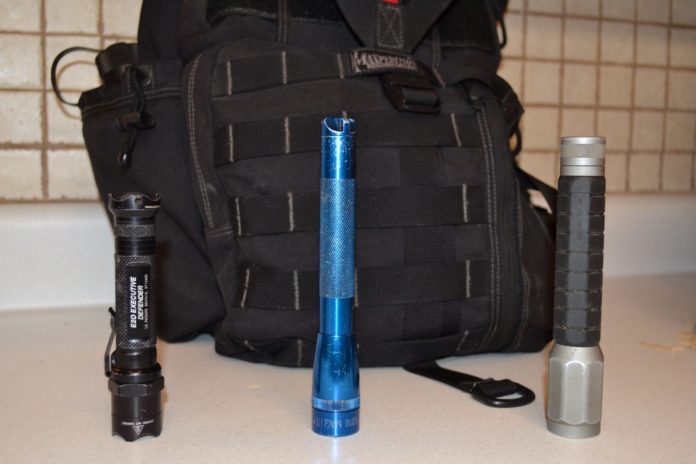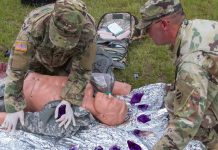Since before I can remember, one of the main activities in my life, that nowadays my life pretty much revolves around has been backpacking through the wilderness. It started back when I was just 7 or 8 and used to spend days and even weeks out in the wild with my dad.
That man was an absolute master at surviving in the wilderness, and to this day I am convinced that if everything man-made were to simply disappear, he’d be one of the few people to survive effortlessly.
Needless to say, I learned a lot from him, for which I am infinitely grateful to be able to pass on to other people today. One of the things I inadvertently learned was to pack as light as I possibly could, ironically something I did not always want to do. He’d often go through my backpack and throw out like half of it, claiming that I “didn’t need so much stuff”.
Then, about ten years later when I was big enough to go alone, I decided to pack as much as I wanted to – a decision that I quickly regretted. My backpack on that first solo hike weighed around 50 pounds, and it goes without saying that I was back home days before I planned – I was exhausted, I had the worst kind of backache that you can imagine and I actually managed to slightly sprain my right knee due to not being used to that kind of weight.
When my dad saw the state that I was in, all he said was “packed too much stuff, didn’t ya?”, in a very observant, non-condescending manner. He instantly knew what kind of mistake I had made, and what is really amazing, he knew that I would make it.
The truth is that nearly all serious campers have made this mistake at some point, so of course, I was going to make it. You’d be surprised how easy it is to convince someone that they need a thing that they absolutely don’t, in fact, the entire marketing industry is based on this fact alone. Your backpack should never weigh more than 15 to 20 pounds if you want to have a comfortable hike, so you always need to question yourself about whether you really need everything that you’re putting in there, or if you’re just bringing it along because you want to.
To make this process a bit easier for you, today I want to cover some points that will help you become better at packing light, and give you a few suggestions on how you can reduce the overall weight of your backpack.
A Lighter Backpack
Let’s start with the backpack itself. It goes without saying that smaller backpacks are lighter than bigger ones, so the less stuff you’re going to be carrying around, the smaller and therefore lighter your backpack can be. It’s a good idea to actually purchase a smaller, lighter pack so that you’re limited by the amount of stuff you can carry. Make this choice carefully, and don’t be reluctant to take the pack back if you buy one that is too small – you do need it to be large enough for all the things you actually need.
A backpack without any fancy harnesses or anything of the sort shouldn’t way more than 2 pounds, while those designed to carry 50-pound loads can weigh up to 8 when they are empty. This is an easy way to lose some additional weight without actually having to take anything out, so make sure you get the right pack and you’ll thank yourself later on.
High-Calorie Foods
Food can be quite heavy, especially if you’re planning to go out into the wilderness for more than a few days. If you’re inexperienced with hunting and foraging your food out in the wild, you’re going to need to bring enough to keep your strength up until you come back. A very valuable metric to look at in this case is the calories per ounce, often abbreviated to CPO.
In short, this can tell you how caloric a certain type of food is, and the more caloric it is, the less of it you’ll have to eat in order to feel full. Bread, rice, pasta, and other high-carbohydrate foods, for example, have very low CPO, while foods high in fat like nuts and peanut butter are much better in this respect. All in all, you should aim that your food CPO is around 130 and no lower, as this means that you’ll be able to bring less food and still not go hungry.
Stove
Bringing a small gas stove along for the trip is a good way to make sure you’re always able to cook food and boil water in order to disinfect it. However, not only can stoves themselves be quite heavy, but you also have to account for the fuel that you will need in order to keep it burning. It’s a good idea to consider two types of stoves for this application, the traditional white-gas stove and the canister stove.
Some of the issues the white-gas stove has for hiking is that they are rather heavy and inefficient in terms of fuel consumption. That means that you’ll ultimately need to carry around more fuel, in addition to the added weight of the stove itself. A much better idea, in my opinion, is to get your hands on a canister stove, or simply carry no stove at all and use a fire to cook your food if you’re out there by yourself or just one other friend.
No Extra Clothes
Packing a lot of extra clothing might be something that you’ve heard to be a good idea when you’re out in the wild, simply because it’s convenient to have something to change into in case you’re caught in a surprise shower or your clothes get super-dirty. However, having a lot of clothes in your backpack can quickly add up to an additional 5 to 7 pounds of weight, which is definitely something you don’t want.
Instead, get used to washing your clothes on the go and simply hanging them to dry from your backpack. You can go a long way simply washing your undergarments and socks, as those cover the parts of your body that sweat the most. If you’re hiking during the summer, those will dry out pretty quickly, in no more than three to four hours.s
LED Headlamps
If you’re going out into the wild you’re going to need some sort of illumination apart from your campfire and the moonlight and for this purpose, I highly recommend that you get yourself some LED headlamps. There are two reasons why I suggest you do this.
First, headlamps are lighter than conventional flashlights, and since you carry them around in your head you have your hands free at all times. And second, LED technology is much more energy-efficient, which means that you won’t have to carry around a ton of extra batteries, which is cheaper and easier on your back.
Inflatable Pillows
A pillow can be a great help when you have to sleep on a forest floor, but it can also be highly impractical for carrying around. This doesn’t only apply to its mass since pillows don’t actually weigh that much, but they take up a lot of space.
I tried packing my favorite pillow into my backpack one time when I was going out into the woods for a few days, and what happened was that I could hardly pack anything else into my backpack because it took up too much space and couldn’t really be compressed.
Then something occurred to me: Why wouldn’t I simply bring an inflatable pillow that takes up virtually no space at all when it is deflated, but works just as well as a regular pillow when it is inflated? The only problem I had with this approach was that my skin became slightly irritated from contact with the synthetic material the pillow was made of, but it was nothing stuffing it into a pillow sack didn’t fix. Speaking of the material, it’s worth noting that you should be extra careful around inflatable pillows because some of them are highly flammable, so using them to fall asleep next to a campfire is probably not a really good idea.
Think Twice About Hiking Boots
Having a good pair of hiking boots is a really good idea, but the truth is that you don’t always need them. In fact, they can often even be somewhat of a hindrance. You see, not all the weight you’re going to be carrying around is going to be in your backpack – your boots are going to be contributing quite a bit too, and hiking boots tend to be quite heavy because they’re made of quality materials that are supposed to last a long time, and keep your feet safe from any kind of moisture or cold.
That being said, if you’re out hiking in the middle of July, there’s really no need to torture your feet and the rest of your body by putting on heavy hiking boots. A pair of good, sturdy sneakers is all you need, as long as you aren’t going to be treading ponds and creeks (which you can also do, as long as you take your sneakers off first).
Thinner Sleeping Bags (If Possible)
The same goes for your sleeping bag. A thick, toasty winter sleeping bag will generally weigh much more than one that is made for summer. A good 30-degree rated bag with a 750 down fill will rarely weigh more than two or three pounds, and if you are capable of sleeping in your clothes you won’t need anything else to keep you sufficiently warm, 90 percent of the time. For really cold nights, you can opt-out for a hooded variant for keeping your head warm – I’ve used these in November and I can tell you firsthand that they work wonderfully.
Water Supply & Chemical Treatment
Never underestimate how much water you’re going to need for your hike, especially on a warm summer day. Unfortunately, water can also be very heavy, weighing a thousand kilograms per cubic meter.
An alternative to carrying huge amounts of water is packing a water filter and simply treating nearby creek water whenever you need a refill, but certain water filters can also be fairly heavy, which obviously goes against your goal to pack as light as possible.
Personally, I’m a big fan of chemically treating water with chlorine tablets. Most tap water nowadays is treated with some type of chemical, and chlorine is often used because it’s really cheap and effective. In large doses, it can be really toxic, but the good news is that it takes an unfathomably small amount of chlorine to purify large volumes of water.
Boiling is always a good way to disinfect it if you don’t want to put chemicals in your drinking water, but I find that this takes too much time and it generally too much of a hassle compared to using chlorine. Just keep in mind that you will have to filter the large debris like dirt and sand from your water by using some kind of sterile gauze or a piece of cloth before you treat it with a chlorine tablet, as the tablet will take care of eliminating the harmful pathogen, but it won’t change the fact that the water is still dirty.
Conclusion
As you can see, it really isn’t that hard to learn to pack light, but it’s absolutely essential if you plan to spend a lot of time in the wilderness by yourself. I sincerely hope that these tips have been helpful as much as they were for me when I first learned them from my dad and from my own personal experience. I wish you the best of luck in all your future wildlife adventures, and remember to have fun!





















